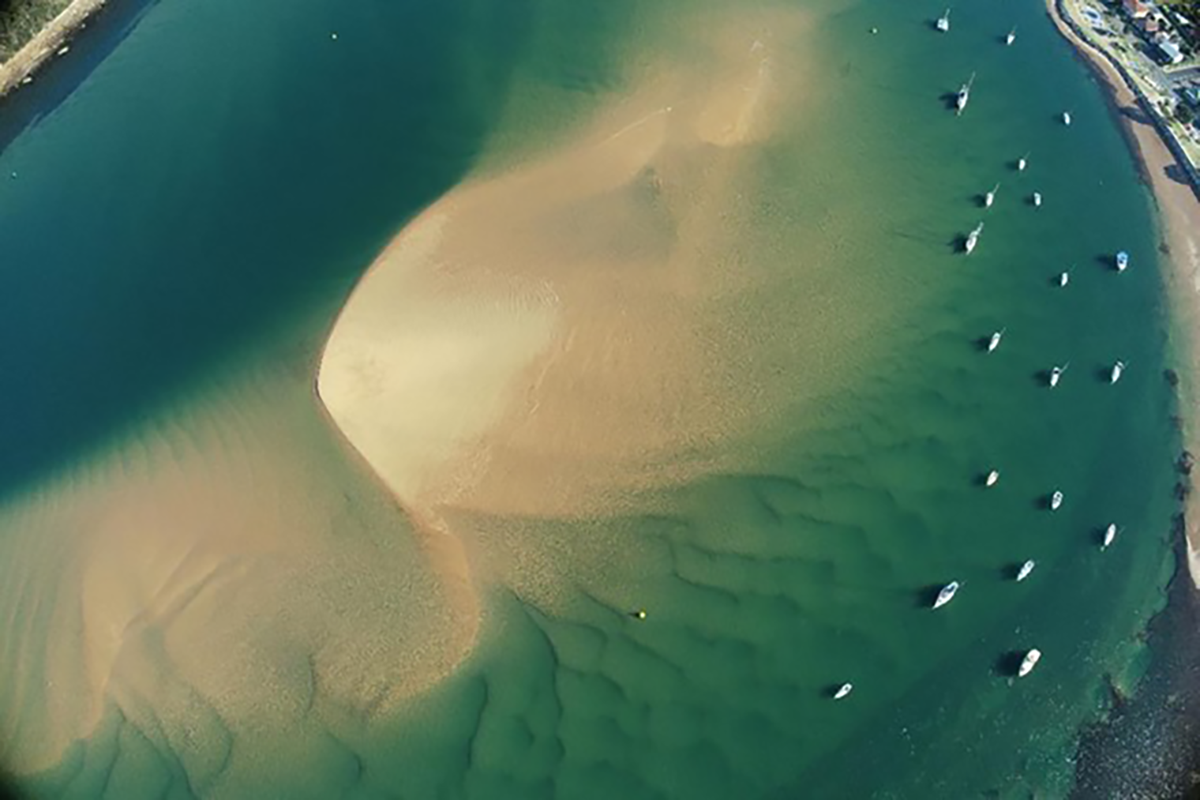Editors’ Vox is a blog from AGU’s Publications Department.
Coastal environments face unprecedented challenges. Sandy beaches, river deltas, estuaries, cliffed coasts, and carbonate environments can change over human timescales, but directions and rates remain difficult to predict.
A new cross-journal special collection, Prediction in Coastal Geomorphology, will provide an overview of scientific and methodological advances that aim to improve or test predictions in coastal geomorphology. We invite studies that advance predictions on a range of timescales, from individual storms to coastal formation, and a range of spatial scales, from sand grains to landforms.
The search for predictions
The search for predictions in coastal geomorphology is old. Escoffier in 1940 made foundational contributions to predict the dimensions of tidal inlets. Bruun’s Rule to assess the response of coastlines to sea level rise was published in 1962. There is an AGU monograph on prediction in geomorphology from 2003 showcasing the increasing role of mathematical models in geomorphology and their (in)ability to predict landscape change.
A lot has changed in coastal geomorphology in recent years. Regular satellite data coverage that emerged since the mid-1980s has led to timeseries with sufficient resolution to show global coastal geomorphological change. It has led to opportunities for model-data assimilation and also widespread applications for predictive studies including long-term shoreline recession rates and responses to climate variability. Increasing data availability will also improve model testing and prediction uncertainty assessment.
At the same time, new models have been developed. Physical models including XBeach, Delft3D, and ShoreTrans show increasing skill with predictions of storm barrier breaching to long-term coastal evolution. Advancements in physical model applications have also exposed model limitations. Predictions from determinist physical models are often sensitive to empirical-based formulations and poorly constrained parameters, such as bed erodibility or slope-driven sediment transport.
New statistical models, including machine learning methods, have also emerged in coastal geomorphology in recent years (Goldstein et al., 2019). They have led to predictions for sandy coastlines, nearshore sandbar movements, to rocky coast erosion.
Many challenges remain despite these significant advances in coastal geomorphological predictions. Many models require continuous time series of forcing (e.g., waves) which are limited for future scenarios. The effect of sea-level rise remains difficult to isolate from other processes that affect coastal geomorphology, which limits the testing of sea-level predictions. The influence of extreme events on long-term geomorphological changes is also still puzzling.
Many challenges remain despite these significant advances in coastal geomorphological predictions.
There are also fundamental limits to predictability. Coastal systems are composed of multiple interacting scales and scale-dependent processes (Werner, 1999). Uncertainties on small scales may grow over time and influence larger scales, but not everything can be resolved. Initial conditions make most large-scale coastal systems unique and prevent experimental control and repeatability (Haff, 1996). Most predictions remain statistical in nature.
Advancing our understanding of predictions
Despite these difficulties, the need for coastal geomorphologic predictions is greater than ever. Climate change and other anthropogenic interventions will lead to increasing coastal hazards, testing coastal adaptation and resilience capacities. The long-term viability of many coastal environments, including deltas, atolls, and barrier islands, is uncertain at best.
The need for coastal geomorphologic predictions is greater than ever.
In our special collection, we invite studies that advance coastal geomorphological predictions and offer insights into predictability. We take a broad view on predictions, encompassing model predictions of past coastal geomorphological change, future change, and also theoretical, field, and experimental work that assesses predictions. Papers can be submitted either to the Journal of Geophysical Research: Earth Surface, Earth’s Future, or Earth and Space Science. The submission window has opened and will end in November 2023. Publications will be available online on a rolling basis as soon as they are accepted.
—Jaap Nienhuis ([email protected], ![]() 0000-0002-4296-7450), Utrecht University, The Netherlands; Florent Grasso (
0000-0002-4296-7450), Utrecht University, The Netherlands; Florent Grasso (![]() 0000-0001-7679-8600), IFREMER, France; Evan B. Goldstein (
0000-0001-7679-8600), IFREMER, France; Evan B. Goldstein (![]() 0000-0001-9358-1016), University of North Carolina–Greensboro, USA; Robert Kopp (
0000-0001-9358-1016), University of North Carolina–Greensboro, USA; Robert Kopp (![]() 0000-0003-4016-9428), Rutgers University, USA; Kristen Splinter (
0000-0003-4016-9428), Rutgers University, USA; Kristen Splinter (![]() 0000-0002-0082-8444), UNSW Sydney, Australia; and Kristy Tiampo (
0000-0002-0082-8444), UNSW Sydney, Australia; and Kristy Tiampo (![]() 0000-0002-5500-7600), University of Colorado Boulder, USA
0000-0002-5500-7600), University of Colorado Boulder, USA

